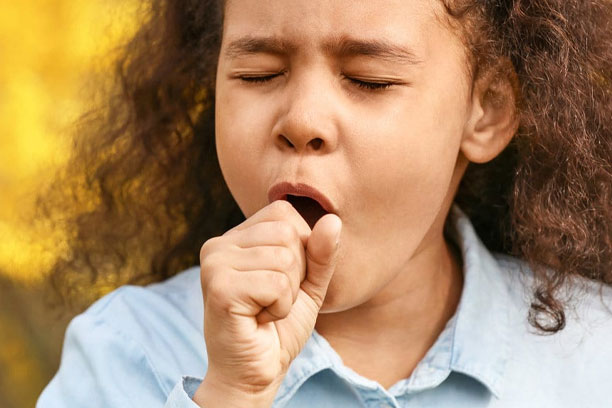Whooping cough, scientifically known as pertussis, is a highly contagious respiratory infection. It primarily affects infants and young children, posing significant health risks if left untreated or undiagnosed. As a parent, understanding the fundamentals of whooping cough is crucial for safeguarding your child's health. In this guide, we'll delve into what whooping cough is, its symptoms, causes, diagnosis, treatment, and prevention strategies.

What Is Whooping Cough?
Whooping cough, or pertussis, is a bacterial infection caused by Bordetella pertussis. This bacterium attaches to the cilia (tiny, hair-like extensions) lining the respiratory tract, releasing toxins that damage the airways and lead to inflammation. The infection primarily affects the throat and lungs, resulting in severe coughing spells.
Symptoms of Whooping Cough
The symptoms of whooping cough typically progress through several stages
- Catarrhal Stage: This initial stage resembles a common cold, with symptoms such as runny nose, sneezing, low-grade fever, and a mild cough.
- Paroxysmal Stage: During this stage, severe and uncontrollable coughing fits occur. These fits are often accompanied by a distinctive "whooping" sound as the child gasps for air after coughing.
- Convalescent Stage: In this final stage, the coughing gradually decreases in frequency and severity but may persist for several weeks.
Causes of Whooping Cough
Whooping cough spreads through respiratory droplets when an infected person coughs or sneezes. Infants and young children are particularly vulnerable to contracting the infection, as they have not yet developed immunity through vaccination or previous exposure.
Diagnosis of Whooping Cough
Diagnosing whooping cough can be challenging, especially during the early stages when symptoms resemble those of other respiratory infections. A healthcare provider may conduct a physical examination, review the child's medical history, and order laboratory tests such as a nasopharyngeal swab or polymerase chain reaction (PCR) test to confirm the diagnosis.
Treatment of Whooping Cough
Treatment for whooping cough typically involves a combination of antibiotics and supportive care to alleviate symptoms and prevent complications. Antibiotics such as azithromycin or erythromycin can help reduce the severity and duration of the infection if administered early in the course of the illness. Additionally, maintaining hydration, providing adequate rest, and using a humidifier to ease coughing can help manage symptoms.
Prevention of Whooping Cough
The most effective way to prevent whooping cough is through vaccination. The DTaP vaccine, which protects against diphtheria, tetanus, and pertussis, is routinely administered to infants and young children as part of the recommended immunization schedule. Pregnant individuals are also encouraged to receive the Tdap vaccine during each pregnancy to pass on immunity to their unborn child. In addition to vaccination, practicing good respiratory hygiene, such as covering coughs and sneezes, can help reduce the spread of the infection.
Whooping cough is a serious respiratory infection that can have severe consequences, especially for infants and young children. By familiarizing yourself with the symptoms, causes, diagnosis, treatment, and prevention strategies outlined in this guide, you can take proactive steps to protect your child's health and well-being. Remember to consult with a healthcare provider for personalized guidance and recommendations tailored to your child's specific needs.
